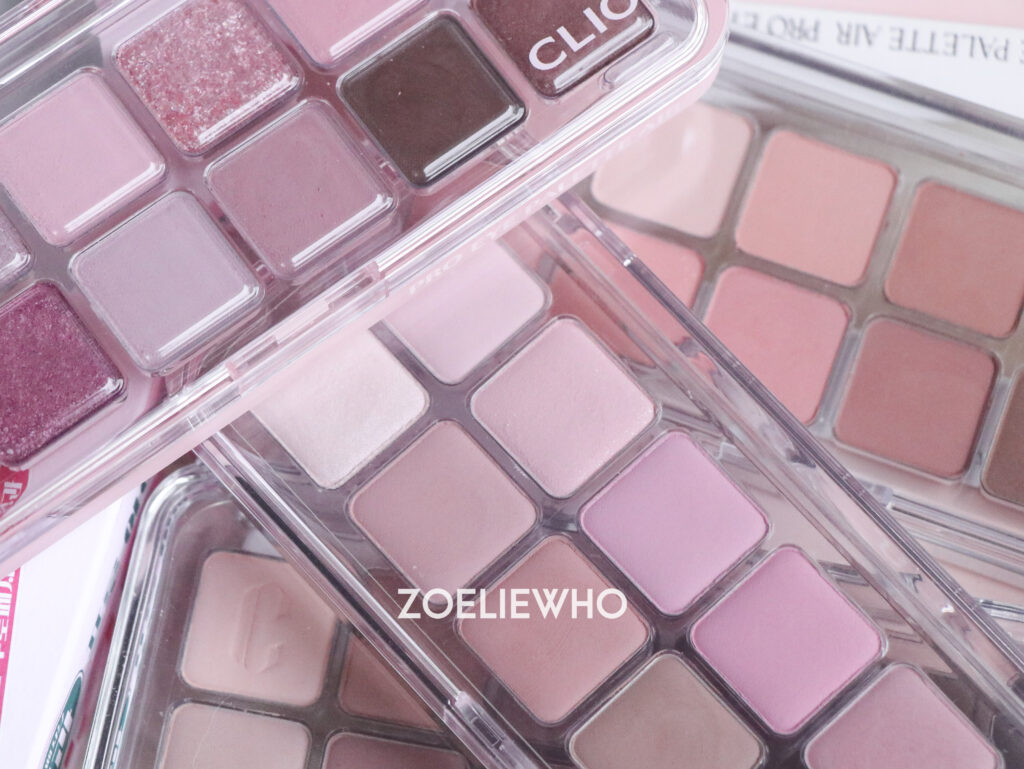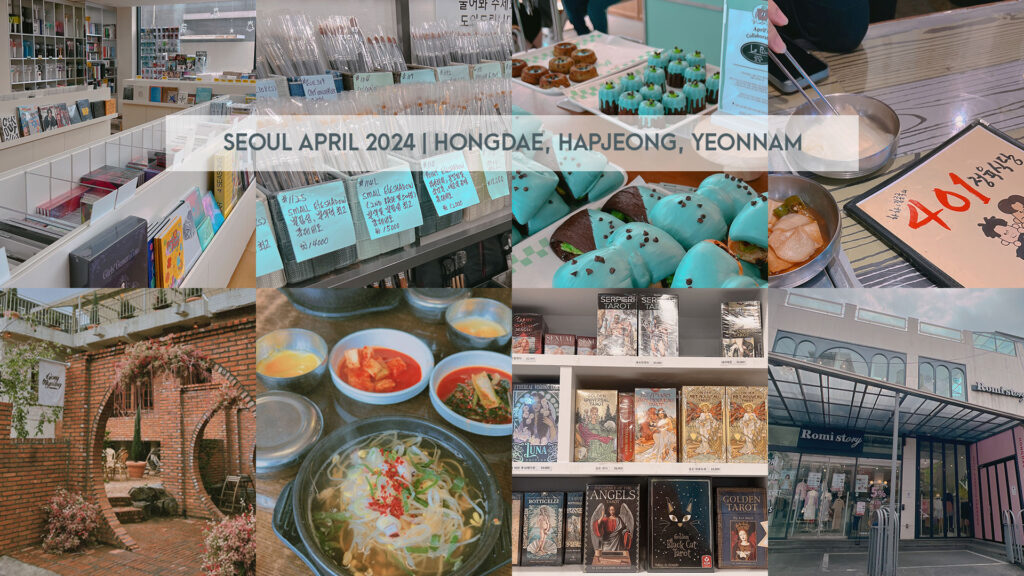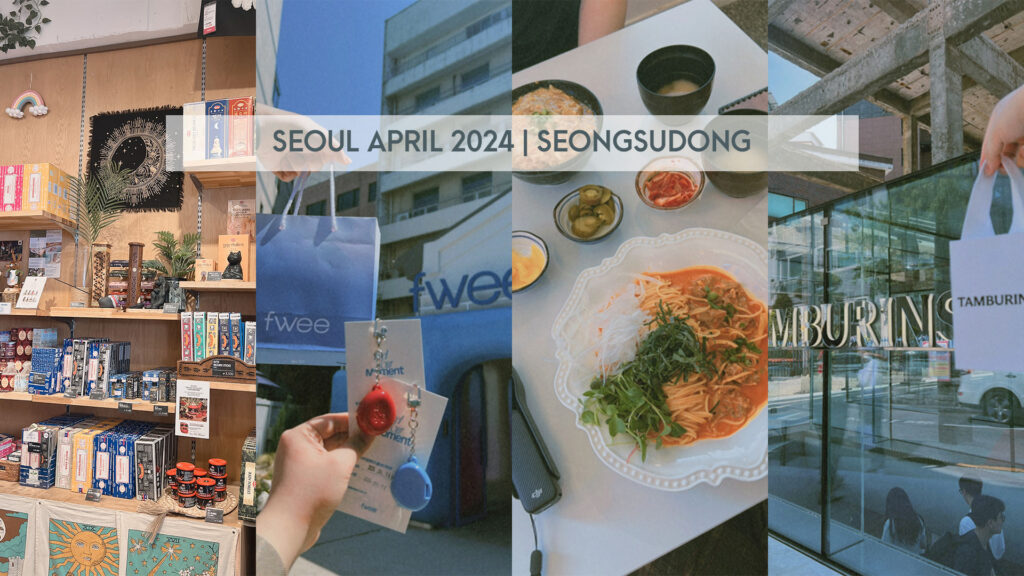Local Contents
Our Planned Itinerary
Day | Itinerary |
|---|---|
Day 0 | Our flight departed at 10pm. |
Day 1 | We arrived in Seoul at 7am and headed to Seoul Station, reaching around 9am. After that, we explored the Dongdaemun (DDM) area until 1pm when we could check into our accommodation. |
Day 2 | We made a quick visit to Ewha University, then strolled along the bustling streets of Myeongdong and visited Namsan Tower. |
Day 3 | Our day took us to Sinsadong and Gangnam, exploring the trendy neighborhoods and soaking in their vibrant atmosphere. |
Day 4 | We ventured to Seongsudong and Itaewon, immersing ourselves in the eclectic mix of cultures and experiences these areas offer. |
Day 5 | Anticipating rain, we opted for indoor activities, including visiting Lotte World Mall, exploring the aquarium, marveling at the Bongeunsa Temple, and browsing through the COEX Mall. |
Day 6 | We spent the day exploring the artsy district of Hongdae and the nearby area of Hapjeong. |
Day 7 | This day was dedicated to exploring the historical sites of Gyeongbukgung and Bukchon, followed by leisurely walks through Anguk and Yeonnamdong. |
Day 8 | We returned to Yeonnamdong for more exploration, visited the vibrant Mangwon Market, and ended our day back in Hongdae. |
Day 9 | We checked out at noon, spent some more time exploring the DDM area, and then headed to the airport for our flight, which departed at 8am. |
Day 10 | We arrived back home in the early hours, catching some sleep before starting our day around noon. |
Info for your trip planning
These insights are gleaned from my experiences during visits to Seoul, Korea, in April-May 2019 and April 2024.
Disclaimer: I am not an expert, please proceed with additional researches as well.
Language Used
Focusing on learning basic Korean should be your primary goal. If this proves challenging, you can rely on the Google Translate app or the Papago app, which offers conversational translation features, for assistance.
For multilingual individuals like yourself, proficiency in English and/or Mandarin can be incredibly advantageous. Fortunately, many younger South Koreans in Seoul have at least a basic understanding of these languages, with some even being experts. Due to the significant number of tourists and immigrants from China, many salespeople in Seoul either have Chinese residency or have undergone training to improve their Chinese language skills to better serve Chinese tourists.
Many signs and banners in Seoul include English, Japanese, and/or Mandarin translations. Additionally, tourism authorities often station multiple tourist officers/help personnel proficient in different languages across popular tourist areas to assist visitors.
It’s worth noting that many older South Koreans may not be proficient in other languages. Therefore, it’s advisable to still learn some Korean, whether through watching K-Dramas or taking formal lessons.
Food Costs & Menu Browsing
Street food prices in Seoul typically range from 2,000 won to 20,000 won, with an average cost of around 5,000 won. Tanghulu, the popular melted-sugar-coated fruit sticks, are priced between 3,000 won and 5,000 won. These typically consist of 4 or 5 strawberries or similarly sized fruits and are commonly found in areas like Hongdae and Myeongdong.
At BBQ restaurants, meat options usually start at 15,000 won and average around 16,000 won per dish, with servings ranging from 150g to 180g. For coffee or other beverages at cafes, prices typically range from 4,000 won to 8,000 won, with an average cost of 5,500 won.
You can also browse menus on Naver Map, which is quite convenient. Most of the menus are pretty recent, so you won’t have to worry too much about discrepancies.
(Ps: Hanam is cheaper to eat in Malaysia than in Seoul.)
Payment Methods
It’s worth noting that many establishments now offer cashless payment options using the wave method, making transactions quick and convenient. However, pin payments are becoming increasingly rare. This is particularly relevant for cards like TNG, which have daily spending limits for both pay-wave and pin payments. While South Korean merchants typically only accept pay-wave, the TNG Visa Card limits daily spending to RM1250, whereas pin payments allow up to RM5000 per day.
For seamless transactions, it’s advisable to have a reliable travel spending card like Wise or TNG Card, along with a credit card or two. While cash is still widely accepted, especially at stalls run by elderly merchants, most street food and traditional market stalls also offer credit transfers as an alternative. It’s wise to carry around 200,000-300,000 won in cash as a precautionary measure, ensuring you’re prepared for any situation.
Weather Prepping
Beware of the rain! Always synchronize your itinerary with the weather forecast. During my trip to Seoul, one of the days was forecasted to have a 79% Probability of Precipitation, and indeed, it rained persistently from early morning until late at night, accompanied by a significant drop in temperature. To navigate this, I strategically planned indoor activities for that day, ensuring we wouldn’t get soaked at the onset of our adventures.
For those hailing from tropical climates like myself, a word of caution: While many TikTokers offer weather forecasting insights, it’s prudent not to rely on advice tailored to colder climates when you’re accustomed to year-round warmth. Their recommendations may not be applicable, given the stark differences in climate adaptation. What they deem as “warm” (at 20 degrees Celsius, for instance) can feel quite chilly to us.
Temperatures ranging from 10 to 22 degrees Celsius warrant attention. While some of us may be accustomed to sleeping in air-conditioned rooms within this range, the brisk winds of Seoul, Korea, can be piercing, leading to discomfort like nosebleeds and sore throats. Consider wearing masks to mitigate the impact of the biting cold air on your respiratory system.
Imagine a blend of cold mountain air and evening beach breezes. If you plan to spend time outdoors until nighttime, ensure you don a thick jacket to stay warm. Layering with thin clothing underneath is sufficient, as most indoor venues provide heating. Opt for heat-retaining socks to accompany any bottom wear other than long pants or jeans. Skin-colored pantyhose with inner linings prove to be particularly effective.
In the unfortunate event of falling ill (as I did), here are some remedies I recommend: (a) Purchase Vitamin C beverages from convenience stores, and (b) Visit a pharmacy to procure pills and nasal sprays. Most pharmacists possess basic English proficiency, ensuring smooth communication for your needs.
Sewage Smell & Cigarette Smell are Everywhere
The omnipresence of sewage and cigarette smells in Seoul is undeniable. No matter where you go, it seems these odors find a way to permeate the air. Even with a mask on, the pungency of sewage and cigarette smoke remains unmistakable. It’s almost guaranteed that every street corner you encounter will be accompanied by one or both of these smells, making it a persistent aspect of navigating the city.
Transportation
First things first: Obtain your Korea Tour Card from the train stations or inquire at the Information desk for its availability. This card, akin to a T-Money card, facilitates travel via bus, train, and taxi. Conveniently reloadable at stores or kiosks within train stations, it streamlines your transportation experience.
Note: Losing the card renders it non-refundable or transferrable. While registering the card to oneself may be possible, the process for foreigners like myself remains uncertain. However, the institution is actively pursuing a tagless system, hinting at potential resolutions for this issue in the near future. How exciting!
Should you opt out of using T-Money for trains only, one-way tickets can be purchased from ticket machines at train stations. Be mindful of the 500 won deposit required per ticket. For buses and taxis, cashless methods are necessary. Buses exclusively accept suitable cards (T-money, U-Pass, EB Card, Cashbee, and Korail Membership Cards), whereas taxis accommodate credit cards (and cash too).
During bus/train rides: Brace yourself upon boarding public transport, particularly buses. Many drivers exhibit a penchant for speed, exhibiting little patience before accelerating. The force with which they apply the brakes may prompt contemplation on the affordability of brake pads in South Korea.
Upon boarding a bus, promptly tag your card. Prepare to alight before your intended stop and ensure to tag out your card to evade penalty fees. Locals often tag out their cards immediately upon the bus’s departure from the previous stop.
AREX rides: For AREX tickets procured via Klook, utilize the ticketing machine to redeem your physical tickets. Verify your car and seat allocation before boarding. Given the approximately 45-minute journey duration, securing the right seat is paramount for a comfortable trip.
Walking and Wheelchair-friendliness
When visiting Seoul, Korea, be prepared for plenty of walking and stair-climbing. During both of my trips, I found myself averaging around 20,000 steps per day. Thankfully, Seoul’s well-developed public transportation system allows you to reach virtually any destination with a combination of public transport and some walking.
However, it’s important to note that many infrastructures in Seoul were built before the widespread use of escalators and elevators. Consequently, some train stations may lack these amenities entirely, while others may have stairs at the entrance followed by an escalator further inside, creating an odd layout.
This raises the question: is Seoul a wheelchair-friendly place? The answer is both yes and no.
Yes, efforts have been made to accommodate elderly individuals by installing more escalators and elevators in various locations. Wheelchair-friendly buses are available, and signs at elevators prioritize those who are injured, pregnant, elderly, or wheelchair-bound.
In addition, it’s worth noting that traffic light crossings in Seoul also feature lowered curbs to facilitate easier crossing for pedestrians, including those with mobility challenges. These lowered curbs enhance accessibility and ensure a smoother experience for all pedestrians, including wheelchair users, parents with strollers, and individuals with mobility aids.
However, some areas remain inaccessible to those with mobility challenges. Many shops located on upper floors require climbing stairs for access, and since most buildings lack elevators, this poses a significant barrier for wheelchair users.
Navigating Seoul’s hilly terrain can pose challenges even for able-bodied individuals. Considering the difficulty of walking uphill, it’s difficult to imagine how wheelchair users would manage to navigate such inclines with ease.
Safety and Security
Seoul, Korea is generally considered a safe place, with most locals being law-abiding citizens who keep to themselves. It’s not uncommon for belongings left in public to go untouched by bystanders. However, this can also lead to a strong bystander effect, where people may be hesitant to intervene in dangerous situations. If you ever feel unsafe or are being stalked, don’t hesitate to seek help from the first credible and helpful-looking individuals you come across, or contact the police if necessary.
The drinking culture in Seoul is quite robust, with many individuals consuming alcohol until they’re unable to walk. I once encountered a drunk man who hovered over me on the train, leaning over the separation board for the entire ride. It was a frightening experience, compounded by the fact that no one intervened. Fortunately, he didn’t pose any harm and eventually passed out over the board. However, it’s important to remain vigilant, as there are always exceptions to the rule, and with the influx of foreigners visiting the capital, it’s wise to exercise caution and not let your guard down completely.
Attitude towards Westerners vs SEA Asians
An unpopular opinion, yet widely discussed and confirmed across social media, highlights the discernible selectivity often exhibited by many salespeople in Seoul, Korea. During both of my visits, a notable portion of sales staff either overlooked my presence, cast disdainful glances, or openly displayed a negative attitude. It’s worth noting that most of these salespeople didn’t even attempt to conceal their demeanor.
On one occasion, while at a prominent local perfume store, I found myself disregarded while the sales attendant promptly attended to Western customers who had queued behind me. This pattern repeated itself on numerous occasions, with sales staff persistently ignoring me even when the store emptied, leaving me as the sole patron. While I understand the potential pressures faced by those in the service industry, I also observed instances where such behavior seemed unjustifiable. Some salespeople maintained a dismissive attitude until the moment of payment, at which point their demeanor inexplicably shifted to one of warmth and friendliness. However, post-transaction, they reverted to a cold and indifferent stance.
While encounters of this nature are not uncommon in service industries globally, I found such experiences to be more prevalent in Seoul compared to Kuala Lumpur. Nonetheless, amidst these encounters, I also encountered exceptionally friendly, polite, and helpful sales staff on various occasions. Ultimately, the nature of your interactions may largely depend on chance.
Constipation & Pharmacy Visits
Prune juice in bottles are everywhere, you can find them in Olive Young, supermarkets, and convenient stores if they carry it. Try half a bottle before downing everything. It should work in about an hour or two.
Pharmacies are also everywhere where they sell useful medicines and patches. The prices do have small variants between one to another. Survey pharmacies before bulk purchasing is recommended. They do close around 7pm though, so keep in mind.
Religion and Cult on the Rise
It’s not uncommon to encounter radical Christians in public spaces, often spreading religious propaganda that condemns practices like homosexuality and abortion as sinful. They may use loudspeakers to amplify their message and actively encourage passersby to join them in their beliefs. Some individuals may even target local women to engage them in discussions about their religious views. Additionally, there are cults known to approach foreigners, enticing them to participate in rituals and ultimately scamming them out of money. It’s important to be cautious when encountering individuals like these and to exercise vigilance in such situations.
Helpful Tips:
Buy the Sim Card. (No, really, just buy it)
Investing in a WiFi dongle wasn’t worth it for me. I wasn’t keen on carrying around yet another gadget to charge. Plus, with my iPhone lacking dual card slots, I was also able to use a kit that I was gifted with that allowed me to store my SIM card, use a pin to eject the SIM card holder, and carry USB adapter heads.
Initially, I considered relying on my usual roaming service with my actual phone number, thinking it would be convenient to access my TAC whenever needed (I had to use the TAC at the very beginning of my trip as well). But, to my dismay, my service provider, Umobile, failed to mention that after exceeding 500GB of high-speed internet daily, the speed would plummet to a sluggish 64kbps. The lack of transparency was frustrating—I only discovered this when I urgently needed internet for navigation upon arrival. Despite scouring their website, I couldn’t find this crucial information. It was only after some thorough Googling that I stumbled upon the specifics of the 64kbps cap. To make matters worse, the customer service experience was less than satisfactory. Forced to find an alternative, my partner ended up subscribing to Maxis’ roaming plans.
While my previous roaming experience in Singapore had been smooth sailing, it seemed that the service didn’t extend as seamlessly to other countries. Maxis’ offering (“capped at up to 1Mbps after excess the first 2GB data,”) while clearer in terms of data speed caps, came with limited validity options. We opted for the 15-day plan despite our 9-night stay, purely due to pricing constraints.
Enter the KT SIM card purchased through Klook—the saving grace of our connectivity woes. Offering better speed and package options, the KT SIM card’s reduced speed after exceeding a certain threshold was a respectable 5mbps. Throughout our trip, we encountered no issues with speed or coverage. While external calls and SMS were not included, we opted for a small top-up, which ended up going unused.
Check the operating hours! (Very important!)
It’s worth noting that not all stores adhere strictly to the standard 10 am opening hours. Depending on the area, district, and the preferences of the shop owner, you might find stores opening as late as 11 am or even 1 pm. Similarly, many malls have adjusted their closing times to 8 pm instead of the usual 10 pm, catching some visitors off guard—as we experienced firsthand at Shinsegae Gangnam.
Luggage & Bag Storage (How to Locate & App)
In virtually every train station, a luggage storage system awaits your convenience. The official app for these storage facilities is T Locker, developed by the Seoul Metropolitan Rapid Transit Engineering.
Utilize this app to pinpoint the nearest luggage storage system in your vicinity. These storage units may be situated on the B2F level of the train station.
Simply scan the QR code located atop the system with your smartphone. This action will direct you to either download the app from the app store (if not already installed) or to the specific T Locker page corresponding to the system you are accessing.
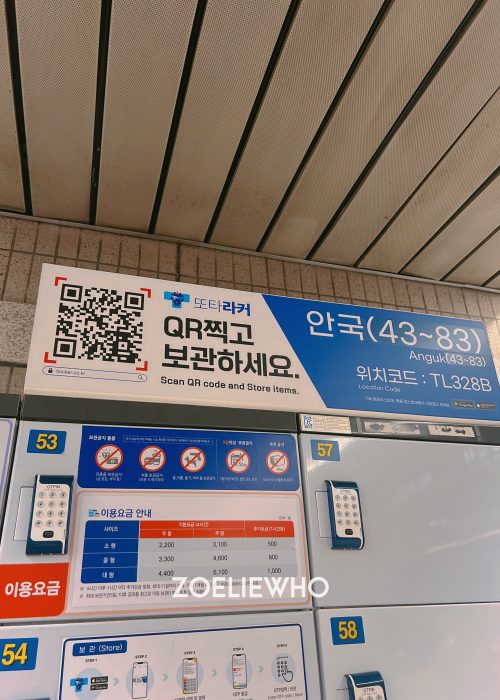

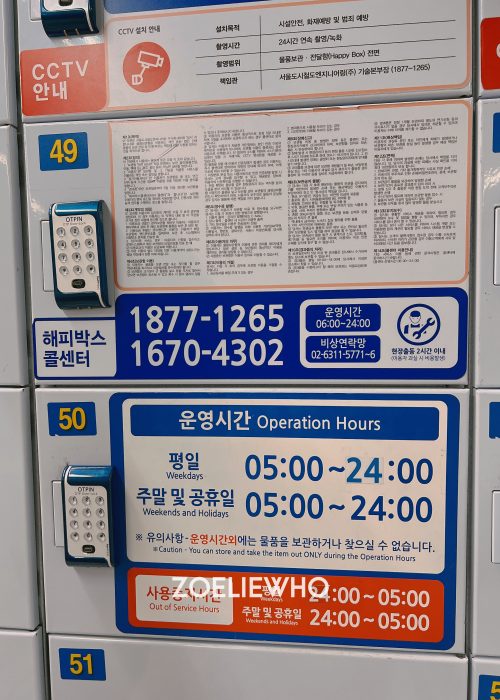

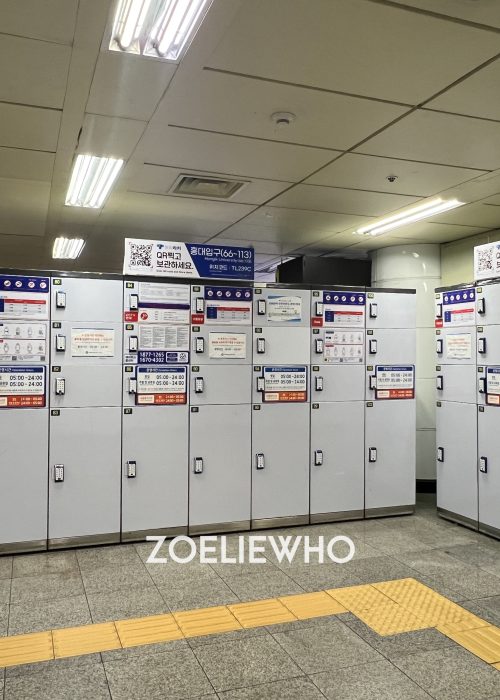
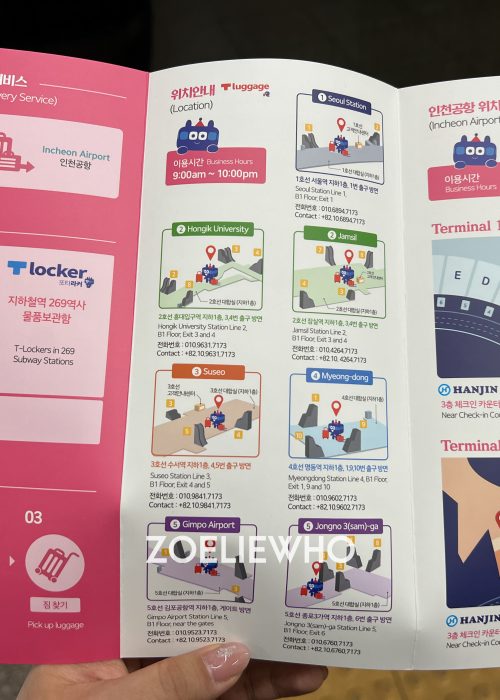
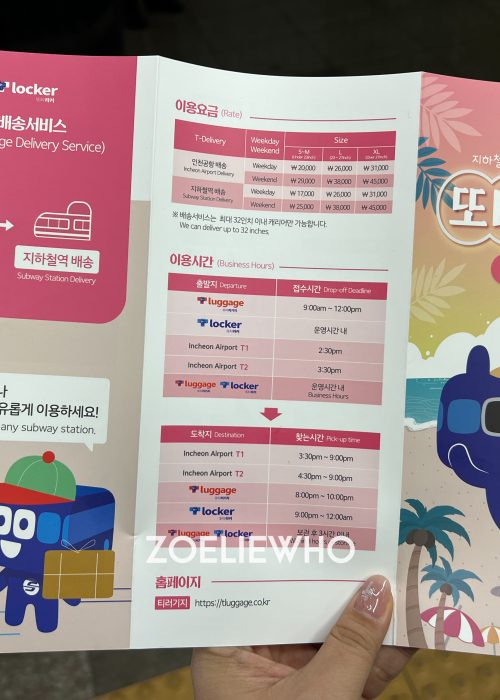
Researching routes, shops, and product options
On YouTube, there are numerous ‘Walker’ videos showcasing various areas of Seoul, Korea. These videos offer a virtual exploration of specific neighbourhoods, allowing you to familiarize yourself with places you plan to visit. Paying attention to how people dress in these videos can also provide valuable insights. I highly recommend checking out the Seoul Walker channel for comprehensive coverage.
For information on shops and product options, TikTok/Douyin is an excellent resource. Here, you’ll find a plethora of recommendations, swatches, reviews, and opinions. Mandarin speakers/readers may find the RED app (Xiao Hong Shu) particularly useful, as it often contains superior content compared to English platforms. Users on this app frequently share hidden gems and underrated places to visit. Given the popularity of South Korea among Chinese residents, you can find virtually any information you need through this app.
Creatrip is definitely worth checking out as well. It’s like the new Mangoplate, but with even more diverse content. I’m not sponsored or anything, but I have to say, I’m really impressed by how quickly they update their content.
Keywords:
- Free items for tourists at the airport
- Events and dates
- Cosmetic and Beauty Expo
- Nail Expo
- Pokemon Pop Up
- Flower Expo
- Olive Young Sales
- Pop-up events
- Concerts & Music Festivals
Weight maintaining & shipping out boxes.
During my 2019 trip, I found that my 40kg luggage allowance was nearly insufficient. However, when purchasing tickets for my 2024 trip, I was surprised to find that the weight allowance fee had almost doubled compared to 2019. To mitigate potential excess baggage charges, we opted to top up approximately RM80 for an additional 10kg allowance per person, bringing our total to 30kg each. Otherwise, we would be potentially paying RM400-600 for an additional 20kg allowance per person, which would have amounted to 40kg each.
Despite this precaution, we still harboured concerns about exceeding our luggage weight limit, especially if we were to make substantial purchases. As a contingency plan, I explored forward shipping companies that offer direct shipping to Malaysia via air or sea at reasonable rates. For instance, the cost was approximately RM100 for the first 10kg or RM190 for the first 20kg via sea shipping. This proved to be a more budget-friendly option compared to purchasing additional weight allowances for flights or utilizing Korea Post services like EMS or Korea parcel shipping.
Given the plethora of shipping companies available, I recommend researching to find one that best suits your needs.


